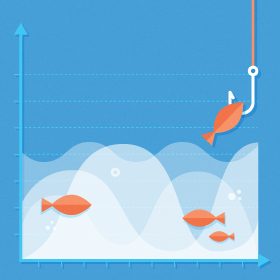Ecommerce case studies
Success stories and lessons learned about eCommerce strategy. How real businesses do data-driven marketing with ecommerce analytics, CRM, and email automation.
Acquisition AARRR Pirate Metrics Case Study: Yumi
Until now, we’ve explained the AARRR metrics in theory: acquisition, activation, 
Sure enough, we’re starting with Acquisition. Since it’s the main focus of emerging companies, we talked to the founder of Yumi, Louis de Bentzmann, who shares with us what they particularly do to grow their customer base.
WooCommerce Analytics Case Study: Segafredo Zanetti
The stories of ecommerce businesses and how they use WooCommerce analytics to learn more about their customers and grow in revenue are always fascinating for data nerds like us.
This time, we are exploring how the Australian branch of the world-famous coffee brand, Segafredo Zanetti does business online.
Originally from Italy (where else?), the company has expanded over borders and now its high-quality coffee roasts and espresso machines are available to businesses and end consumers worldwide.
Analytics WooCommerce Businesses Use: The Fish Club Case Study
We interview entrepreneurs about the analytics WooCommerce businesses need to stay 
We focus on what KPIs are important for their specific business case based on growth stage, type of product, geographic reach, revenue targets and so on.
This week’s case study is on The Fish Club, a 4-month old online store operating out of Pontian, Malaysia.
WooCommerce Analytics Case Study: Barrington Coffee
In a series of case studies, we’re exploring how WooCommerce analytics help businesses navigate in the right direction towards loyal customers and increased revenue.
The main focus of these talks and the resulting case studies is what data entrepreneurs need to make decisions in eCommerce, how they analyze these data and what are the most important KPIs they monitor.
Ecommerce Growth Hacks [3 Case Studies]
Ecommerce growth hacking is still something many don’t believe in. Growth hacking is one of those terms that everybody’s using and nobody can really define.
So we decided to put together some examples of what it means for eCommerce – and, hopefully, give you ideas how you can growth hack your own online store.
Sean Ellis came up with the phrase “growth hacker” in 2010 when he needed to better explain what he was doing for startups. In early stage, startups, e-commerce included, don’t need traditional marketing – they need to grow (in customer base) and grow fast.
WooCommerce Analytics Case Study: Yumi On a Growing Quest
As part of our journey to built the most useful WooCommerce analytics platform, we’re starting a series of case studies about how real e-commerce businesses choose the KPIs they measure success by and how they analyze their data.

Yumi was created to fill in a niche Louis de Bentzmann and Raphael de Taisne discovered was missing in France 2 years ago – healthy food on the go. They found it really hard to keep nutritional balance while leading a busy life – preparing healthy food is time-consuming.








